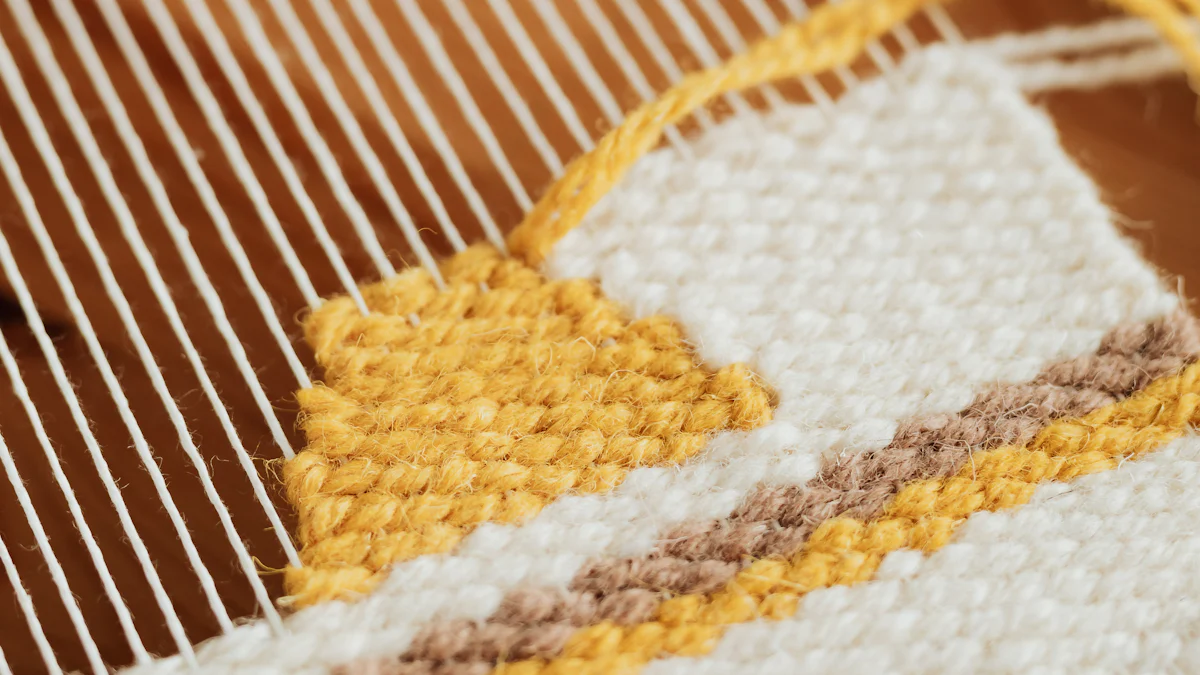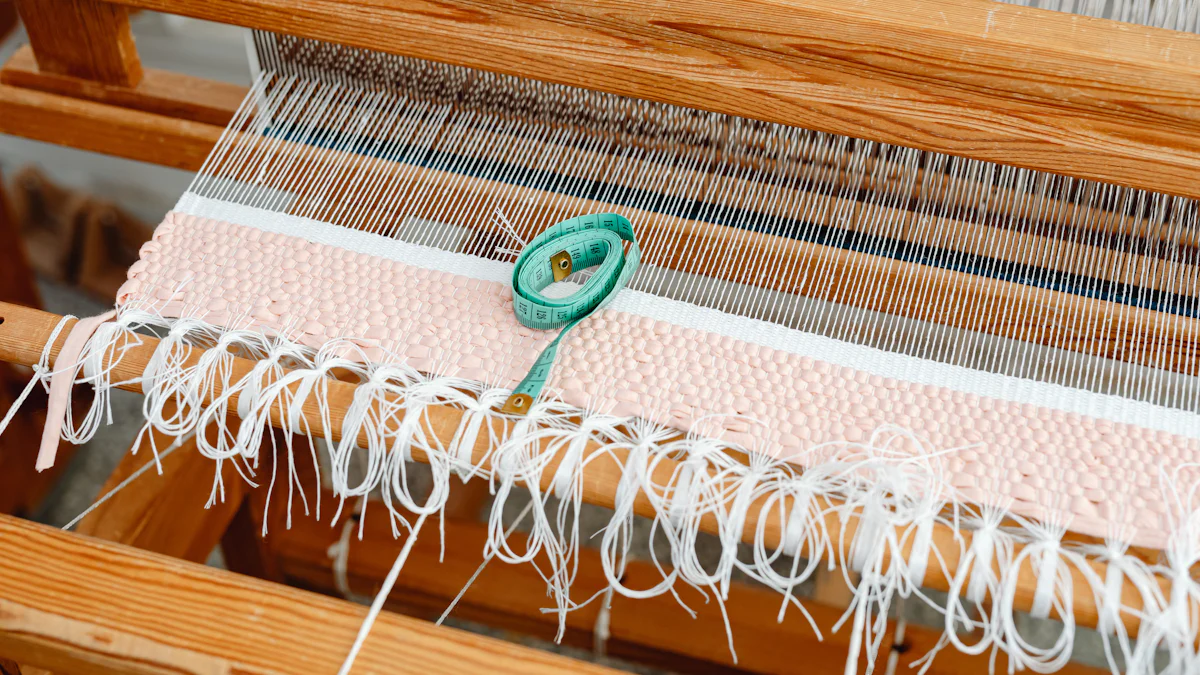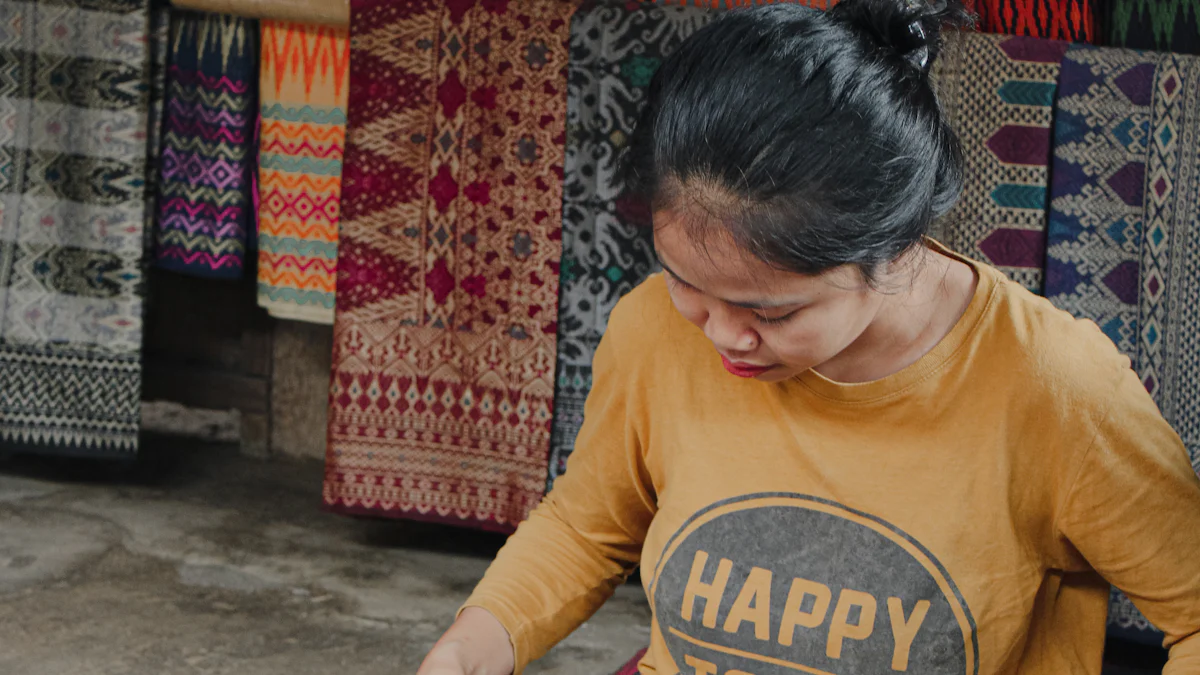
Ever wondered what makes pique fabric so special? It’s all about that raised texture! This fabric stands out with its small, diamond-shaped ridges, created using two sets of yarns. Originating in 18th-century France, it became a textile icon. Today, pique fabric remains a favorite for its durability and breathable charm. Learn more here.
Key Takeaways
- Pique fabric has a bumpy texture made with two layers. It is strong and lets air pass through easily.
- Pique fabric changed over time with better loom machines. These machines helped make detailed designs and produce more fabric.
- Today, making pique fabric focuses on saving the environment. Factories use green methods to save resources and keep good quality.
Origins of Pique Fabric

Development in 18th-Century England
Let’s take a trip back to 18th-century England, where pique fabric began to shine. During this time, textile makers experimented with weaving techniques to create fabrics that were both functional and beautiful. They developed a unique double-cloth structure that gave pique fabric its signature raised texture. This innovation wasn’t just about looks—it made the fabric durable and breathable. I imagine how exciting it must have been for weavers to see their creations stand out in a market filled with plain textiles.
Influence of Provençal Quilting
Before England’s advancements, pique fabric drew inspiration from Provençal quilting in southern France. This traditional quilting style involved stitching layers of fabric to create raised patterns. French artisans used this technique to craft intricate designs for bedspreads and clothing. When I think about it, Provençal quilting was like the ancestor of pique weaving. It’s fascinating how one art form influenced another, blending creativity with practicality.
Early Popularity in European Textiles
Pique fabric didn’t take long to win hearts across Europe. Its textured surface made it visually appealing, while its versatility allowed it to be used for everything from dresses to home décor. People loved how breathable and durable it was, especially in warmer climates. I can see why it became a favorite—it combined style and function effortlessly.
- Unique weaving techniques created a textured surface.
- It worked well for garments and home décor.
- It offered breathability and durability.
- Its aesthetic appeal made it stand out.
Pique fabric wasn’t just a trend; it was a game-changer in European textiles.
Technical Aspects of Pique Fabric
Double-Cloth Structure
The double-cloth structure is what makes pique fabric so unique. It uses two warp threads and a filling yarn to create its signature raised texture. This construction gives the fabric a waffle-like appearance that’s both stylish and functional. I love how this design isn’t just about looks. It also makes the fabric breathable and durable, which is why it’s such a favorite for warm-weather clothing. The raised patterns add depth and character, making pique fabric stand out from other textiles.
Role of Warp and Weft
The magic of pique fabric lies in how the warp and weft threads work together. Let me break it down for you in a simple table:
| Step | Description |
|---|---|
| Warp and Weft Setup | The warp threads (lengthwise) and weft threads (crosswise) are set up on the loom. |
| Pattern Selection | The jacquard mechanism selectively raises certain warp threads to create the pattern. |
| Knitting | The weft threads are knit in and out of the raised and lowered warp threads to form the textured pattern. |
| Repetition | This process is repeated for each row, creating the distinctive raised design across the fabric’s surface. |
I find it fascinating how this process combines precision and creativity. Every thread plays a role in crafting the intricate patterns that pique fabric is known for.
Creating Raised Patterns
Creating those raised patterns isn’t as simple as it looks. The process involves several steps:
- Two warps (lengthwise yarns) and a filling yarn (crosswise yarn) are used in the weaving process.
- This setup creates a double cloth with a raised pattern on the surface.
- The jacquard mechanism raises specific warp threads while leaving others lower.
- The weft threads are woven through the raised and lowered warp threads.
- This process repeats row by row, forming the fabric’s textured design.
I think it’s amazing how this technique blends traditional craftsmanship with modern technology. The result is a fabric that’s not only functional but also visually stunning.
Evolution of Pique Weaving

Advancements in Loom Technology
The evolution of pique fabric owes a lot to loom technology. Early weavers relied on handlooms, which required skill and patience. But as technology advanced, so did the tools. The invention of the jacquard loom in the early 19th century was a game-changer. It allowed weavers to create intricate patterns with ease. I imagine how exciting it must have been to see these looms in action, turning simple threads into beautiful, textured designs.
Over time, looms became more efficient. Power looms replaced manual ones, speeding up production. These advancements didn’t just make weaving faster—they also made it more precise. The raised patterns on pique fabric became sharper and more consistent. It’s amazing how a single invention could transform an entire industry.
Impact of Industrialization
Industrialization brought massive changes to the textile world, and pique fabric was no exception. Factories replaced small workshops, and machines took over tasks that once required hours of manual labor. This shift made pique fabric more accessible to people everywhere. I think about how this must have felt—being able to afford a fabric that was once considered a luxury.
Mass production also meant experimentation. Manufacturers started using different materials and dyes, giving pique fabric a fresh look. The fabric became a staple for everything from summer dresses to upholstery. It’s incredible how industrialization turned a niche textile into a household name.
Modern Innovations
Today, pique fabric continues to evolve thanks to modern technology. Designers now use computer-aided design (CAD) software to create patterns with pinpoint accuracy. Advanced looms, which are computerized and high-speed, make production faster and more efficient. I love how these innovations blend creativity with technology.
What’s even better is the focus on sustainability. Modern factories use methods that conserve water and energy, making the production process eco-friendly. Automated quality control systems also ensure that every piece of fabric meets high standards. It’s inspiring to see how far pique fabric has come—from handwoven beginnings to cutting-edge production.
Looking back, the journey of pique fabric is nothing short of remarkable. It started in the 17th century with hand-operated looms and evolved through milestones like the Industrial Revolution and the invention of the Jacquard loom. By the 19th century, it became a favorite for waistcoats and dresses, and by the 20th century, it dominated sportswear like tennis and golf attire.
Today, I see its influence everywhere. Designers like Ralph Lauren and Thom Browne have embraced its versatility, using it in everything from casual wear to couture. Its unique texture, comfort, and durability make it a staple in modern fashion. I love how it continues to adapt, blending tradition with innovation.
Pique fabric isn’t just a textile; it’s a testament to creativity and craftsmanship. Its timeless appeal ensures it will remain a favorite for years to come.
FAQ
What makes pique fabric different from other textiles?
Pique fabric stands out with its raised texture and double-cloth structure. It’s durable, breathable, and perfect for warm-weather clothing. I love its unique waffle-like patterns!
Can pique fabric be used for home décor?
Absolutely! Pique fabric works great for cushions, curtains, and even upholstery. Its textured surface adds a stylish touch to any space.
Tip: Use pique fabric for throw pillows to create a cozy, elegant vibe.
Is pique fabric eco-friendly?
Modern production methods focus on sustainability. Factories now conserve water and energy during manufacturing. I think it’s amazing how technology makes this fabric more eco-friendly!
Post time: Feb-04-2025
